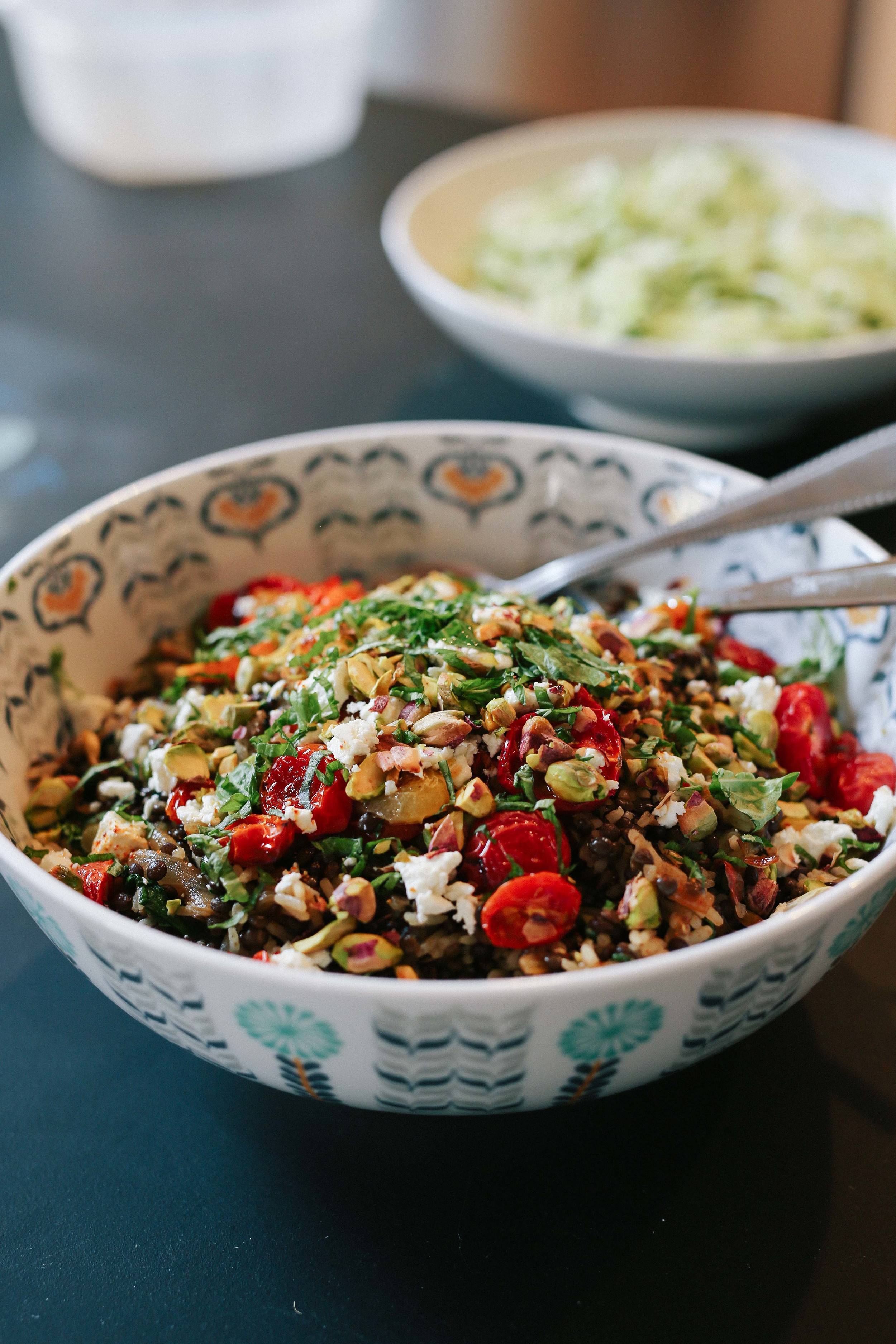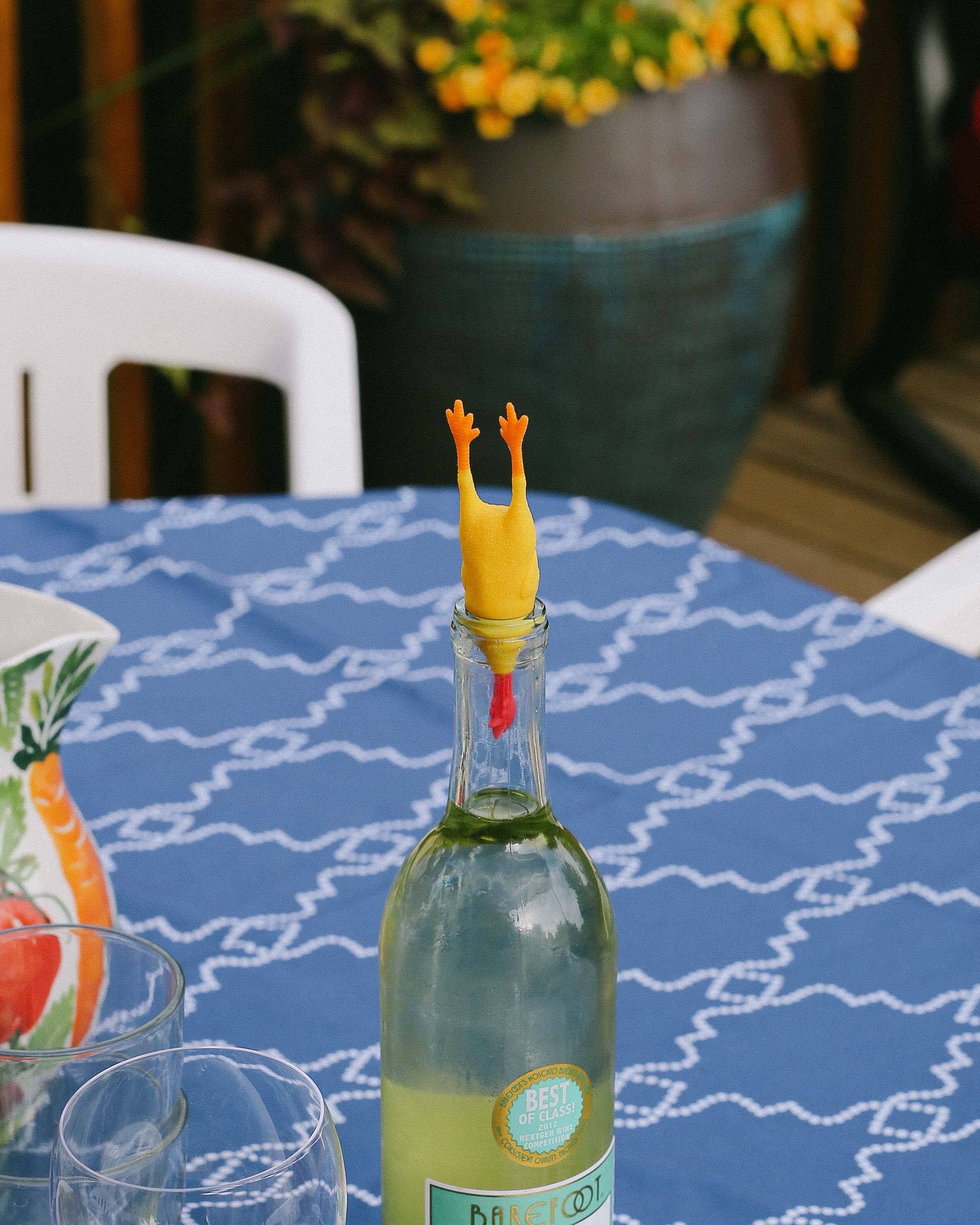Okay, I'm going to toot my own horn for a little bit, but you're going to get a kick-ass pasta sauce recipe at the end, so I promise it will all be worth it.
I'm going to start by saying that I've been delaying giving you this recipe, because it is one of the best things I know how to make, and what exactly is my claim to fame going to be when all of you know how to make it, too? That I can salsa dance at a relatively-okay level? That I know all of the words to "Rollercoaster of Love" and can also make my voice sound like a kazoo? That one of our chickens likes to ride around on my shoulder while I'm in the garden and I will sometimes pretend that I'm a landlocked pirate?
You guys are nice and great and I'm happy you're here and everything, but really. You're not leaving me with much to work with.
Here's the story behind this pasta sauce, along with my reasons for sharing it with you:
I first made this pasta for Richard in our junior year of college, and I am immensely proud of my college self for coming up with something so rad. That being said, I screwed up just after I made this for the first time, and I LOST the little scrap of paper on which I had scribbled ingredients and proportions on the off-chance that the sauce turned out well (which it did) and I wanted to make it again (which I most definitely did). I found the paper scrap in my senior year of college, and then wrote the recipe down in a notebook of Richard's. Which we then lost AGAIN when Richard moved to his first post-college apartment, and then FOUND when we moved Richard out of his place and into our first shared apartment. And then LOST again when we moved to Utah.
This post is a gigantic spoiler alert that the notebook has since been found, but in short, we have a terrible track record of hanging on to this recipe. And thus, I no longer have the right to keep this recipe to myself, because I'll just lose it again at some point in the future. Your track record, however, is perfect, and you will never lose this because now it will be on the internet, where everything exists forever.
I also hereby give you leave to make this recipe your own. Vary the ratios of spicy to mild sausage, or use all one or all the other. Add freshly chopped herbs, such as oregano or basil, at the end for more color. And don't feel obligated to call it bolognese, but that is how Richard refers to this sauce, and it truly does have all of the great qualities of a classic, slow-cooked Italian meat sauce. And when someone you love asks you to make "your bolognese sauce," that is when you forget semantics and appreciate what a wonderful request that is.
I hope you love it.
SAUSAGE "BOLOGNESE" WITH TAGLIATELE AND PECORINO-ROMANO
makes sauce for 1.5-2 pounds of pasta - serves 4-8
I will make this sauce a day or two ahead of when I plan to serve it, if I'm thinking ahead. Just like most braised and stewed dishes, it seems to taste better when the flavors have time to hang out together. And even better, dinner comes together in the amount of time it takes to cook pasta, which is not very long at all!
2 tsp + 2 Tbs olive oil, divided
1 pound bulk Italian sausage (mild, spicy, or 1/2 pound of each, depending on preference)
1 onion, diced
2 carrots, finely chopped
2 celery branches, chopped
3-5 cloves garlic, minced
1-2 chiles de arbol, finely crushed with your fingers
1 tablespoon tomato paste
2 sprigs fresh oregano
2 sprigs fresh basil
1 bay leaf
1/2 cup dry red wine
1 28-oz can diced tomatoes (I used San Marzano)
black pepper
salt
2-4 tablespoons heavy cream
fresh lemon juice, to taste (optional)
1.5-2 pounds Tagliatele, or other pasta
Pecorino-romano
Heat the olive oil in a heavy-bottomed pot over a medium flame. Add the sausage and let it brown a little, using a spatula to break it up into smaller pieces as it cooks. Once nearly all of the sausage is no longer pink, remove it from the pot and set aside (don't worry about any remaining pinkness; the sausage will go back in the pot later to cook again for an extended time).
Add 1 tablespoon of olive oil to the pan, along with the onion, carrots, and celery, and cook, stirring occasionally, until the vegetables soften and begin to brown. Make a well in the center of the vegetables, add the remaining tablespoon olive oil to the well, and add the garlic and chiles to the oil. Cook, stirring in the well constantly, for 15 seconds, before mixing the garlic and chiles into the rest of the vegetables.
Mix in the tomato paste, oregano, basil, and bay leaf. Add the red wine, and let reduce for a minute. Add the tomatoes, along with a pinch of kosher salt and a grind of black pepper, and then add the sausage back to the pot. Wait until the sauce reaches a simmer, then reduce the heat to low and cover with the lid slightly ajar. Cook for 45 minutes, stirring occasionally, and adding a little water if the sauce seems to be reducing too quickly.
Once the tomatoes are fully cooked and the sausage has softened, remove the pot from the heat. Remove the oregano, basil, and bay leaf from the sauce and discard. Using an immersion blender, blend the sauce as much or as little as you'd like. (I like mine to be blended to the point that there aren't large chunks of sausage, but I can still see pieces of carrot and tomato... I guess you would call that chunky? I don't know.) Stir in the cream, and taste. Season with additional salt, pepper, and/or lemon juice, to taste.
Notes on making the pasta and finishing the dish - when I'm ready to cook my pasta, I put my sauce back on the stove and heat it just to a simmer (turning the heat to low once it reaches a simmer).
I cook my pasta until it is almost, but not quite done (still has more of a bite than I'd like), and then I transfer it with tongs or a slotted spoon directly to the (hot) sauce to finish cooking. This helps your pasta and sauce become a more cohesive dish, and also adds more flavor to the pasta as it finishes cooking in the sauce.
Once the pasta is completely coated in the sauce, I remove the pot from the heat and serve it straightaway with a plenty of Pecorino-romano on the side.




















